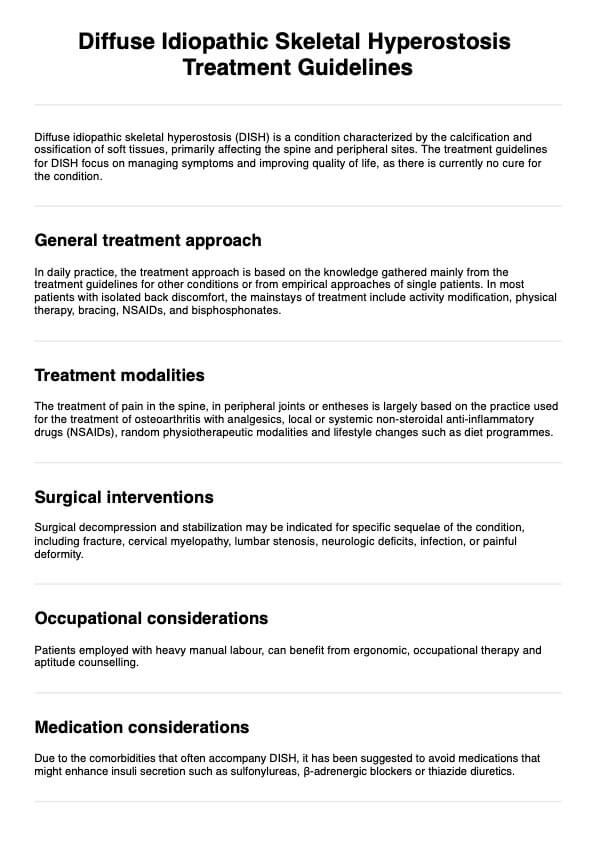Risk factors for DISH include aging (particularly over age 50), obesity, diabetes, metabolic syndrome, and a genetic predisposition. Men are also more commonly affected than women.

Diffuse Idiopathic Skeletal Hyperostosis Treatment Guidelines
Learn about diffuse idiopathic skeletal hyperostosis (DISH), its symptoms, causes, diagnosis, and treatment guidelines.
Use Template
Diffuse Idiopathic Skeletal Hyperostosis Treatment Guidelines Template
Commonly asked questions
DISH is managed through physical therapy to maintain mobility, pain relief with analgesics and NSAIDs, and lifestyle modifications like weight management. In severe cases, surgical intervention may be necessary.
The progression of DISH is typically slow and gradual, with symptoms worsening over years or even decades. However, the rate of progression can vary significantly between individuals.
EHR and practice management software
Get started for free
*No credit card required
Free
$0/usd
Unlimited clients
Telehealth
1GB of storage
Client portal text
Automated billing and online payments











